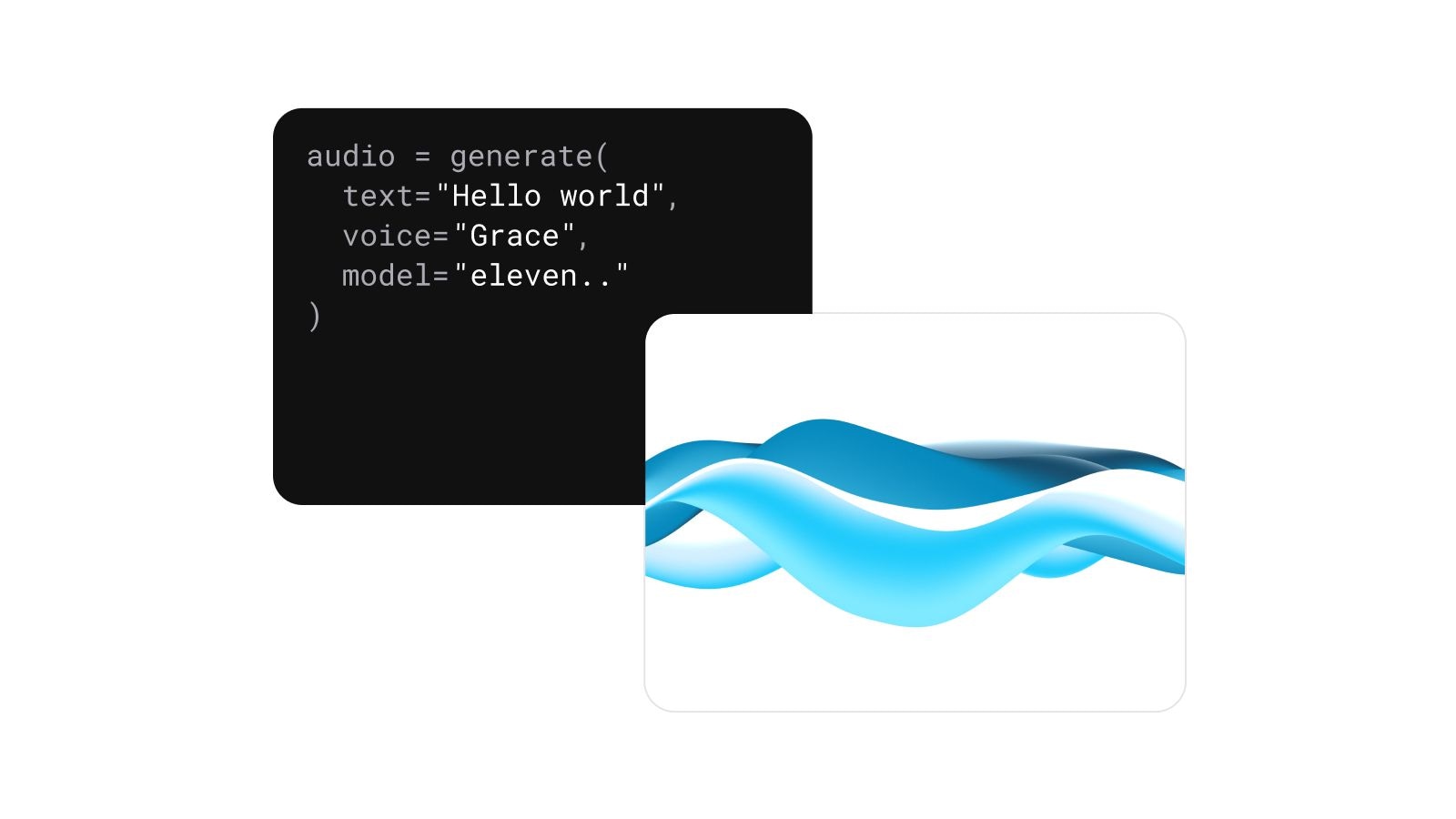
Integrera enkelt vårt Text to Speech-API med kort fördröjning och få tydliga, högkvalitativa röster till dina applikationer med minimal kodning
Din guide för att skapa verklighetstrogna konversationsagenter
Röstaktiverad teknik förändrar hur vi interagerar med maskiner, vilket gör AI-drivna verktyg mer intuitiva och relaterbara. Att kombinera conversational AI med avancerad text to speech (TTS) funktioner tar dessa utvecklingar ett steg längre, vilket gör att agenter kan leverera tydliga, mänskliga svar.
Python utmärker sig som ett självklart programmeringsspråk för utveckling av conversational AI tack vare sin enkelhet och pålitliga funktioner. När det kombineras med ett högkvalitativt TTS API som ElevenLabs, gör Python det möjligt att skapa conversational agenter som förstår användarinmatningar och svarar på ett realistiskt sätt, knappt åtskiljbara från naturligt mänskligt tal.
Den här bloggen utforskar varför TTS-integration är viktig, vilka verktyg som krävs för att göra det möjligt, och hur du kan bygga din egen conversational AI-applikation med Python och ElevenLabs’ TTS API.
Text to speech-teknik tar conversational AI-applikationer till nästa nivå genom att låta dem kommunicera naturligt med användare. Det handlar inte längre bara om att förstå och bearbeta text—det handlar om att skapa engagerande, relevanta konversationer som känns personliga och mänskliga.
TTS-drivna conversational AI utmärker sig på flera områden. Till att börja med förbättrar det användarupplevelsen avsevärt genom att göra interaktioner mer engagerande. Ett livfullt röstrespons kan förvandla en rutininteraktion, som att kolla ditt banksaldo, till en positiv och trevlig upplevelse.
En annan viktig fördel är bättre tillgänglighet. TTS-teknik säkerställer att ingen lämnas utanför konversationen genom att möjliggöra för synskadade användare eller de med lässvårigheter att interagera med AI-agenter.
Utöver tillgänglighet öppnar TTS också upp möjligheter för global kommunikation. Flerspråkig röstutgång gör det möjligt för AI-applikationer att tillgodose olika publiker, och tala på deras föredragna språk eller dialekt.
För att bygga en conversational AI-agent med TTS, behöver du samla rätt verktyg och bibliotek.
Python är en idealisk startpunkt tack vare sitt omfattande biblioteksekosystem och enkelhet. Bibliotek som NLTK används ofta för naturlig språkbehandling, medan SpeechRecognition effektivt hanterar röst-till-text-konvertering.
För text to speech funktionalitet är ElevenLabs’ TTS API ett utmärkt val för både nybörjare och proffs. Dess hyperrealistiska röster, röstkloningsmöjligheter, och anpassningsalternativ säkerställer att din conversational AI låter lika engagerande som den är funktionell.
Setting up these tools will form the foundation of your project.

Integrera enkelt vårt Text to Speech-API med kort fördröjning och få tydliga, högkvalitativa röster till dina applikationer med minimal kodning

Now that we’ve covered the advantages of merging conversational AI and text to speech technology, it’s time to get down to business.
Follow the steps below to power up your conversational AI agent with ElevenLabs TTS:
Start by incorporating ElevenLabs’ TTS API into your project. The platform offers detailed documentation, making it easy to connect the API to your Python application. From generating API keys to testing initial responses, this step establishes the core process of converting text into audio.
Use Python’s SpeechRecognition library to capture user speech and convert it into text. This step enables two-way interaction, with users speaking their queries instead of typing. Combine this functionality with NLTK to analyze the text inputs and ensure your AI understands user intent.
Once the AI has interpreted user input, send the response text to ElevenLabs’ TTS API to generate a spoken reply. The API’s customization features allow you to fine-tune the voice to suit the tone and personality of your application, whether professional, friendly, or authoritative.
Thorough testing is essential to ensure your conversational AI performs well in various scenarios. Test the latency of audio responses, the accuracy of user input interpretation, and the overall flow of conversations. Gather user feedback to identify areas for improvement and adjust settings accordingly.
After refining the application, it’s time to deploy. ElevenLabs’ TTS API is designed to handle high volumes of interactions, making it scalable for small and large projects alike. Whether your application serves a niche audience or an enterprise-level user base, ensure that the deployment environment supports effortless scaling.
Once your conversational AI agent is up and running, focus on optimizing its performance to handle real-world demands. Reducing latency is a key priority. Implementing caching for frequently generated audio can significantly minimize response times. Additionally, ensure that your application is equipped to support multilingual interactions, a must-have feature for reaching global audiences.
När din konversations-
Integrating text to speech with conversational AI closes the gap between technology and human interaction, offering more lifelike user experiences. With Python’s developer-friendly features and ElevenLabs’ advanced TTS API, creating voice-driven applications has never been simpler.
Whether you’re building a chatbot for customer support, an educational virtual assistant, or a multilingual AI agent, the right tools and careful integration make all the difference. By following best practices and making the most of ElevenLabs’ features, you can launch conversational AI agents that deliver top-notch user experiences.

Integrera enkelt vårt Text to Speech-API med kort fördröjning och få tydliga, högkvalitativa röster till dina applikationer med minimal kodning

Bygga på conversational AI-dialoger med realistisk TTS

Reducing dubbing time by 60% with AI voice generation
Drivs av ElevenLabs Agenter